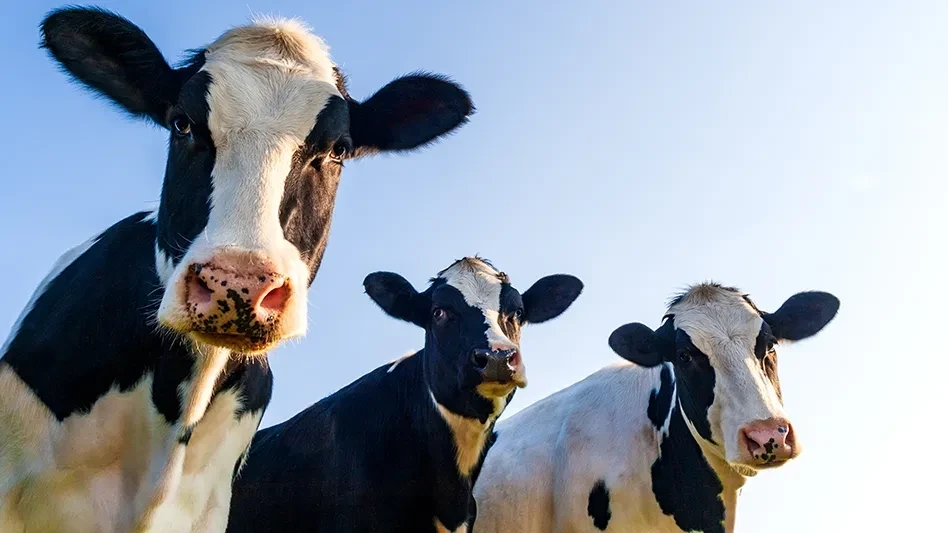
Adobe Stock | Laurent Renault
WASHINGTON, D.C. — To further protect the U.S. livestock industry from the threat posed by highly pathogenic H5N1 avian influenza, the U.S. Department of Agriculture (USDA) shared actions that it is taking with federal partners to help get ahead of the disease and limit its spread.
USDA’s Animal and Plant Health Inspection Service (APHIS) announced a Federal Order requiring the following measures, effective April 29:
- Prior to interstate movement, dairy cattle are required to receive a negative test for Influenza A virus at an approved National Animal Health Laboratory Network (NAHLN) laboratory.
- Owners of herds in which dairy cattle test positive for interstate movement will be required to provide epidemiological information, including animal movement tracing.
- Dairy cattle moving interstate must adhere to conditions specified by APHIS.
- As will be described in forthcoming guidance, these steps will be immediately required for lactating dairy cattle, while these requirements for other classes of dairy cattle will be based on scientific factors concerning the virus and its evolving risk profile.
- Laboratories and state veterinarians must report positive Influenza A nucleic acid detection diagnostic results (e.g. PCR or genetic sequencing) in livestock to USDA APHIS.
- Laboratories and state veterinarians must report positive Influenza A serology diagnostic results in livestock to USDA APHIS.
USDA has identified spread between cows within the same herd, spread from cows to poultry, spread between dairies associated with cattle movements, and cows without clinical signs that have tested positive. On April 16, APHIS microbiologists identified a shift in an H5N1 sample from a cow in Kansas that could indicate that the virus has an adaptation to mammals. Centers for Disease Control and Prevention (CDC) conducted further analysis of the specimen sequence, which did not change its overall risk assessment for the general public, because the substitution has been seen previously in other mammalian infections and does not impact viral transmission. Additionally, APHIS’ National Veterinary Services Laboratories found H5N1 in a lung tissue sample from an asymptomatic cull dairy cow that originated from an affected herd and did not enter the food supply.
The novel movement of H5N1 between wild birds and dairy cows requires further testing and time to develop a critical understanding to support any future courses of action. This Federal Order is critical to increasing the information available for USDA. Requiring positive test reporting will help USDA better under this disease and testing before interstate movement will limit its spread.
USDA said it is important to remember that thus far, it has not found changes to the virus that would make it more transmissible to humans and between people. While cases among humans in direct contact with infected animals are possible, the CDC believes that the current risk to the public remains low.
Additionally, USDA said it continues to see affected cows recover after supported care with little to no associated mortality. USDA continues to work with partners in the states and industry to emphasize the critical importance biosecurity plays in limiting disease spread for all livestock and poultry.
Further, in an effort to maximize understanding and research on H5N1 in dairy cattle, on April 21, APHIS made publicly available 239 genetic sequences from the U.S. H5N1 clade 2.3.4.4b influenza virus recently found in samples associated with the ongoing HPAI outbreak in poultry and wild birds, and the recent H5N1 event in dairy cattle. APHIS has also offered virus samples to interested researchers to facilitate epidemiological study.
APHIS is urging dairy cattle producers and those who work in or with the industry to share epidemiological information from affected farms, even if they are not planning to move cattle interstate. APHIS further urges producer participation in public health assessments to continue to confirm worker safety and monitor for any potential changes in the virus that could impact transmissibility.
In addition, the U.S. Food and Drug Administration (FDA) released an update on the ongoing work to ensure continued effectiveness of the federal-state milk safety system. The FDA and USDA believe that the commercial milk supply is safe because of both the pasteurization process and the required diversion or destruction of milk from sick cows. Pasteurization has continuously proven to inactivate bacteria and viruses in milk, said USDA. The FDA and USDA continue to work closely to collect and evaluate additional data and information specific to avian influenza in dairy cattle and to support state counterparts as this emerging disease in dairy cattle is managed.
To learn more about USDA’s response to HPAI in dairy cattle, visit www.aphis.usda.gov/livestock-poultry-disease/avian/avian-influenza/hpai-detections/livestock.
Latest from Quality Assurance & Food Safety
- IDFA Presents Leadership Award to Six Federal Officials at Annual Celebration of Dairy Reception
- Seeding The Future Global Food System Challenge is Changing Lives: Winners Reflections
- Raw Farm Products Recalled Following Bird Flu Virus Detections
- FDA Issues 2024 Voluntary National Retail Food Regulatory Program Standards
- GSA Launches Assurances Platform, Prism and Webinar Series in Partnership with Wholechain
- Multistate E. coli Outbreak Linked to Iceberg and Romaine Lettuce Blend
- FDA, USDA Seek Information About Food Date Labeling
- William Marler, Food Safety Advocate and Lawyer, Condemns Lack of Safety of U.S. Food Supply





